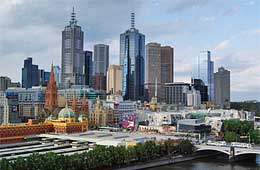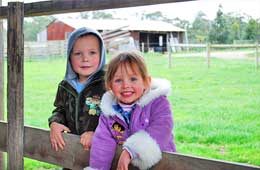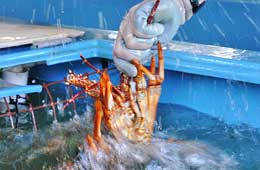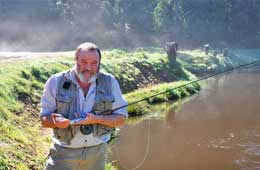Star News Group
TIGER Moth pilot Nick Robertson experienced a highlight in his aviation career recently, when he flew the beloved vintage aircraft from Tooradin Airfield to Moorabbin Airport to take part in a ‘Dawn Patrol Memorial Fly-Past’. The Royal Victorian Aero Club hosts the annual event to commemorate The Battle of Britain, which was September 15, 1940 although the event has also become a memorial flight for all aviators who have lost their lives through war.
While Nick has flown many types of aircraft, he speaks with a special enthusiasm about the Tiger Moth and his participation in the Dawn Patrol. “The Tiger Moth is a beautiful aircraft to fly,” he said. “I love how basic it is and that you have to work hard to get what you want out of it. It just epitomises everything that is good about flying. You have the wind in your hair and when you don’t have the aircraft quite balanced, you can feel the wind on your face. Every move in the plane is exaggerated so it’s good hands on flying.”
The Tiger Moth now based at Tooradin Airfield, was built in 1940. It went into service the same year with the RAAF as an elementary training aircraft for pilots who were sent overseas to fight during the war. “It has four massive wings and it’s slow compared to modern aircraft,” Nick said, “but for its time and purpose it was the perfect plane and to fly it in the Dawn Patrol was a special experience.”
The flight took place this year on September 12, with the participation of more than 30 aircraft from modern twin-engine aeroplanes through to the oldest aircraft there, which was the Tiger Moth.
“Everyone was excited about the flight,” Nick said. “I flew the plane to Moorabbin the night before, and then I left home at 3am the next day to go back. I met up with Stephen Smythe from Tooradin who went with me on the flight to help start the plane. We all registered and after our flight briefing at about 4.30 am, we all took off at 20 second intervals. We were the last to depart because the Tiger Moth was the slowest aircraft.
“It was a beautiful morning and we watched the sun come up as we flew from Moorabbin towards the city. We flew down St Kilda Road and over the Shrine of Remembrance. Then we peeled off and flew past the city towards Williamstown, past the Avalon Airport and over Point Cook Aerodrome, which is the birthplace of the RAAF. The faster aircraft then completed a loop of Port Phillip Bay and we went as far as we could until we heard the others coming back, and then headed for home.”
The aeroplanes landed at Moorabbin Airport where the pilots joined almost 200 people for a sit down breakfast. The guest speaker was retired group captain Les Reading who flew in Korea and the guest of honour was British Consul General Mr. Stuart Gill. Several aviation scholarships were awarded, and a female harmony quartet sang the Australian and British National Anthems before entertaining guests with various old songs that were popular during the war. The breakfast was followed by an air display, which included a parachute drop by the Commando Sky Diving team from Tooradin.
Nick moved to Melbourne in January from the Gold Coast to fly Tiger Moths. “It was something I’d always wanted to pursue,” he said. “I’d previously flown one in 2002 at Geelong Airport where I trained and I absolutely loved it, so when the opportunity came up to fly one at Tooradin I jumped at it.”
He said there have been very few changes to the aircraft since it was manufactured. The four wings that were all hand made from wood have a skin of fabric, but the cloth skin used today is a heavy-duty synthetic material so it doesn’t have to be redone as often as it was in the past. There has always been a metal frame or skeleton around the cockpit and the majority of the plane is still timber but the original paintwork was silver.
He said the controls and instruments in the Tiger Moth are very basic with only an altimeter, an rpm gauge and an oil gauge. “The radio isn’t installed because there are no electrics in the plane at all, so we have an upgraded radio with a battery that we have to plug into a wall at night to charge. There is no starter motor so I need someone else to turn the propeller after I prime the engine and engage the magneto.
“Pilots that mastered flying the Tiger Moth during the war were set up very well to fly other aircraft, which they would have flown overseas. Not only was it a good aircraft for new pilots because it was basic, but it was also versatile so they could learn to do a full range of manoeuvres. I think that’s why it was such a successful aircraft.”
At Tooradin Airport, the colourful Tiger Moth provides scenic and aerobatic joy flights over Westernport Bay. “The aerobatics we do in the plane is a fairly gentle experience,” Nick said. “It’s a series of pretty basic manoeuvres that includes some wingovers, a few loops and a few barrel rolls. The plane spins very nicely as well, so it’s a lot of fun and very popular.”
Either Stephen or another starter is always on hand to give passengers a safety briefing and help them get in and out of the aircraft. He makes sure they are comfortable and happy in the plane before turning the propeller to help start the engine.
By Wendy Morriss (formerly Thompson)
Copyright © 2012 Wendy Morriss: Freelance Journalist. All Rights Reserved.





